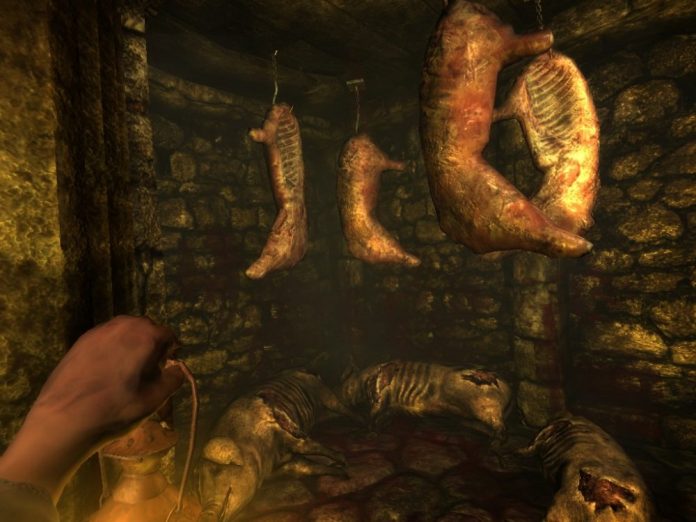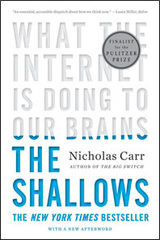In middle school, high school, and even college, the word “paper” carries a
heavy negative connotation. It is not a rare event for a student to sigh, frown,
and mutter “I have to write a paper”. For whatever reason, papers are agreed to
be feared by the majority of people; however, they have no reason to be feared.
Writing papers is a simple and formulaic process that can easily be taught to
anyone, as I will attempt to do here.
The main reason for writing this post is because of my brother, who came to me
seeking help on a paper that was due in a few days. Although he was assigned
the paper weeks ago, he put it off because he was scared to write it. With my
help, he was able to complete an A paper in just a few days and impress his
peers. On top of this, he is now confident writing any sort of paper.
Please keep in mind that this article is geared toward writing research-style
papers, where an argument is being made. Although some of these tips may apply
to other styles of writing, this article is not meant to be strictly adhered
to when writing things such as creative papers.
So What’s the Secret?
In general, there are several pieces of advice you should follow when writing a
paper. You’ve probably heard a few of these words of wisdom in your life, but
they should be taken seriously.
* Start Early. Although it is tempting to continuously put off a paper,
starting early allows you to do only a small amount of work each day and allows
for time at the end to revise and make sure that everything is perfect.
* Write Often. This goes with the previous piece of advice, where starting
early is fairly useless unless you also write fairly often. It is very useful
to stick to a strict schedule and not waver from it. If a strict schedule is
followed, daily writing time can be minimized to something like an hour a day,
which is not bad at all.
* Stay Calm. One of the worst mistakes that people make while writing papers
is getting overwhelmed. They will think of the fifteen pages that have to write
and constantly just try to meet the page limit without thinking about the
quality of their work. Stay calm, stay collected, and consistently complete
small amounts of high quality work.
* Self-Discipline is Important. All of the above rules are great; however,
they do not have any effects on their own. Without self-discipline, it is easy
to waver from any rules you may set and “do it some other time”. Discipline
yourself seriously by taking away things you love. Be your own parent.
The General Formula
With the above tips in mind, it is fairly easy to begin writing and complete
your paper in a reasonable amount of time. Careful attention to planning,
detail, and quality also help create an excellent paper. However, no paper
can be written without an explicit statement of the requirements of that paper.
For most research papers, the general requirements follow a pattern of making
a claim, backing up that claim with a source, and proving that source is
reputable. It’s that simple. Of course, this process needs to be repeated many
times in a succesful paper; however, the process itself is still very easy.
Making a Claim
A claim is simply something that you believe to be true. For instance, “Green
makes humans feel relaxed.” is a claim. Other examples of claims are “Violent
video games cause violent behavior”, “Using a mouse boosts productivity” and
“Wearing hats boosts self-confidence”. Basically, a claim is a statement that
is debatable and must be proven. Thus, the main argument of your paper is also
a claim. Making a claim is quite simple, really. All you have to do is state
what you think to be correct. The hard part comes next.
Proving your Claim
A claim is great on its own because it may cause the reader to question the
thing you’re making a claim about. This questioning may cause them to make a
new conclusion about the topic and thus lead to an advancement in knowledge.
However, this doesn’t really advance your paper. Thus, you need to prove your
claim. Generally, in order to prove your claim, you need to provide evidence
that suggests that your claim may be true. Using the examples of claims from
the above section, here is what some evidence may look like:
- Violent video games cause violent behavior. A study of 20 children showed that
those who played violent video games were more aggressive as adults.
- Using a mouse boosts productivity. People who use a mouse report 5 times more
productivity than their keyboard-weilding counterparts.
- Wearing hats boosts self-confidence. Several brain imaging scans show that
the frontal lobe is more active while wearing a hat.
With the evidence provided, you can see that our claims are now strengthened.
The claim strengthened with the evidence makes up our argument. How do we know
that this evidence is actually correct, though? That leads to the final step in
our paper-recipe-for-success.
Bolstering the Evidence
The details of evidence can either make or break the evidence. For instance,
saying that “because my grandma said it and my grandma is always right” is much
less powerful than saying “journal X reported it and journal X peer-reviews
all submitted articles”. In order to help the reader believe that the evidence
you provided is legitimate and correct, you need to explicitly tell them. In a
nutshell, the reader needs to know why the evidence you chose is the best and
most relevant evidence and why it isn’t incorrect. Using our previous examples
to prove our point:
- A study of 20 children showed that those who played violent video games were
more aggressive as adults. The control group, who were not exposed to
violent video games, were less aggressive. The lives of the subjects were
heavily monitored.
- People who use a mouse report 5 times more productivity than their
keyboard-weilding counterparts, who reported only a small productivity boost
when asked the same question about a keyboard. This question was performed by
an unbiased team over thousands of subjects.
- Several brain imaging scans show that the frontal lobe is more active while
wearing a hat. These results were reported in Journal of Sciences, which is
peer-reviewed and notorious for rejecting submissions with even a hint of
malpractice.
As you can see, a lot of “evidence bolstering” involves showing that the
evidence was not simply construed, but rather it was compared with a control
group, meaning that the observed evidence was indeed significant. With the third
example, we don’t show details about the experiment (because we may not know),
but we show that the experiment was well-done and results were accurate because
the journal wouldn’t accept anything less. All of these are valid ways to show
that an example is more than just words, but a meaningful set of results.
And with that, the three simple steps of an argument come together and form
something meaningful and convincing. A research paper simply consists of these
steps repeated several times. However, they are repeated in a cascading matter.
That is, your big “main claim” is supported by several “subclaims”, which are
each supported by evidence that has some sort of backing behind it. This
cascading layout can create a pretty complex paper. As an outline, your paper
should look something like this:
A) Background information and significance
B) Main Claim (Also known as the Thesis statement)
C) Subclaim #1
–i) Evidence
—-a) Backing of Evidence
–ii) More Evidence
—-a) Backing of Evidence
D) Subclaim #2
–i) Evidence
—-a) Backing of Evidence
–ii) More Evidence
—-a) Backing of Evidence
E) Subclaim #3
–i) Evidence
—-a) Backing of Evidence
–ii) More Evidence
—-a) Backing of Evidence
F) Conclusion
Sometimes, of course, a subclaim may be so complicated that it warrants its own
subclaim, which may warrant another subclaim, and so on. However, in order to
create a convincing paper, the amount of subclaims should be kept to a minimal
amount. An example of this repeating subclaim hierarchy can be seen with our
last example, where a bit of the evidence also requires a subclaim. In totality,
our current claim is as follows:
” People who wear hats are more self-confident. This was proven to indeed be
the case in S&R’s experiment reported in Journal of Science, which showed
increased frontal lobe activity while wearing hats. ”
This claim is a little problematic. Why? You, like I, may be wondering what
“frontal lobe activity” has to do with self-confidence. It is here where another
subclaim may serve to be useful. In order to complete the argument, we can
make another subclaim showing that frontal lobe activity is indeed correlated
with self-confidence, which of course, will require another piece of evidence.
Thus, our argument could be:
” People who wear hats are more self-confident. This was proven to indeed be
the case in S&R’s experiment reported in Journal of Science, which showed
increased frontal lobe activity while wearing hats. This frontal lobe activity
is commonly correlated with increases in self-confidence, as shown in Kirk’s
study of students, which showed that those who categorized themselves as having
a large amount of “self-confidence” had larger frontal lobe regions. This
study was posted in a peer-reviewed journal and is the basis of most modern
self-confidence studies. Therefore, if you’re ever feeling a little lacking in
the confidence area, donning a hat may help. ”
When all elements are combined, a fantastic and convincing argument will create
itself.
The Steps to Completing The Paper
Now that you’re aware of how to write a convincing argument, you may be
wondering how in the world you will have time to come up with claims, address
necessary subclaims, and find reputable evidence for each claim. The process
is surprisingly not very time-consuming as long as you follow the general
time-management guidelines suggested above.
Make an Outline
The first step to any long-term project involves getting your thoughts and
ideas out in an organized fashion. For a paper, the perfect way of doing this
is through an outline. In your first outline, you may want to include the
following items:
1) Your full introduction less your thesis statement
2) Your thesis statement (Or a rough version of it)
3) Subclaim #1
–3i) Evidence supporting subclaim #1 and proof that it is reputable
–3ii) Evidence supporting subclaim #1 and proof that it is reputable
4) Subclaim #2
–4i) Evidence supporting subclaim #2 and proof that it is reputable
–4ii) Evidence supporting subclaim #2 and proof that it is reputable
5) Subclaim #3
–5i) Evidence supporting subclaim #3 and proof that it is reputable
–5ii) Evidence supporting subclaim #3 and proof that it is reputable
6) Conclusion Paragraph
Then, over the next few days, instead of working on the details of the paper
itself, iterate over the outline, find better evidence and sources to back up
your claims, refine your thesis statement and your subclaims. Then, when writing
the actual paper, the only hard work will be choosing words that sound nice.
Each number in the outline represents a new paragraph. Thus, the outline
very closely resembles what your final paper looks like. I’m not going to tell
you the exact process of turning the outline into a paper, but it definitely
isn’t hard.
The Source List
Now, your paper should be pretty close to being complete. The final step is to
simply include your “bibliography” or “reference list”. This is the easiest
step of the entire paper, but most people have a hard time with it. Most papers
will have a format requirement, whether it be MLA or APA or Chicago-Style. Thus,
since you have already compiled your list of evidence when creating your
outline, making a source list is easy. Simply look up the guidelines for your
required formatting style and put in the list of evidence that you used
in your outline. That’s it.
Formatting is Easy
Speaking of formatting requirements, many people who are writing papers for
school lose easy points because they mess up while formatting their papers.
Admittedly, it is easy to be intimidated while getting caught up in the minute
details of MLA or APA or Chicago; however, most of these formatting styles have
online checklists that are easy to follow. Generally, each format has their
own unique style for the following items:
- Margins
- Headers including title pages
- Fonts
- In-Text citations
- Source Lists
Once you edit each of these components of your essay to reflect the style
guidelines set by your formatting requirement, it will look great, giving off
a better first impression and hopefully a higher grade.
Additional Techniques
There are also some additional techniques that will give your paper extra
oomph and extra convincing power. Most of these techniques involve a sort-of
interaction with the reader. If you can predict what the reader is thinking,
you become liked by the reader and they are more prone to listen to what you
have to say in your paper.
Addressing Counter-Arguments
Have you ever watched a commercial or talked to someone who said “But wait..
I know what you’re thinking!” and then they proceed to disprove your opinion?
It’s a very powerful tool. The listener becomes impressed at the fact that
the speaker knew what they were thinking, and the listener is even more
prone to further convincing.
Basically, any time that your argument may seem to have a flaw in it, explicitly
address this seeming flaw and disprove it. Take, for instance, our hat argument,
which is seemingly riddled with flaws. Addressing the possible counter-arguments
makes our argument even stronger.
” It has been proven that people who wear hats have higher levels of
self-confidence. In order to avoid a scenario where only people with naturally
high self-confidence levels were measured, self-confidence levels were measured
before and after the donning of the cap, which always resulted in increased
self-confidence levels. ”
This particular snippet addresses the possible counter-argument of “But what if
the people measured are simply self-confident by themselves?”. For any reader
that was thinking that, addressing their thoughts makes your argument powerful
to them. This addressing of counter-argument can be done with almost any claim
you make, and when used at the right moments will only help convince your
audience that you are right.
Show your Personality
Everyone has that one friend that tells them something along the lines of “Just
use big words from the thesaurus and it will make you sound smart”. In general,
the belief is that if you use big words, you will sound smarter and receive
a higher grade on your paper. Although this course of action may actually result
in higher grades, it does not result in a higher quality paper. In order to
create the highest quality paper, you should let your personality shine through
with every word you choose. If your paper has your sense of humor, your
cheerful choice of words, and your own personal vocabulary, your paper is more
likely to come off as natural to the reader. If your paper is more natural
and more human, it will also be more believable. Of course, never use so much
of your personality that your paper comes off as unprofessional.
In Short
In short, it’s really not too challenging to write a good paper. The main
barriers that stop people from writing good papers are in the minds of the
writers. Most people simply don’t want to follow a strict paper-writing
schedule, while others get too overwhelmed by the idea of following a
strict-schedule and instead ruin their chances of writing a good paper by
committing to a schedule that does not promote solid research and solid
revisioning. As long as you stick to a strict schedule with self-discipline,
make a good outline, make good claims with good evidence, and give yourself
plenty of time for revisions, writing a paper should be a breeze.




